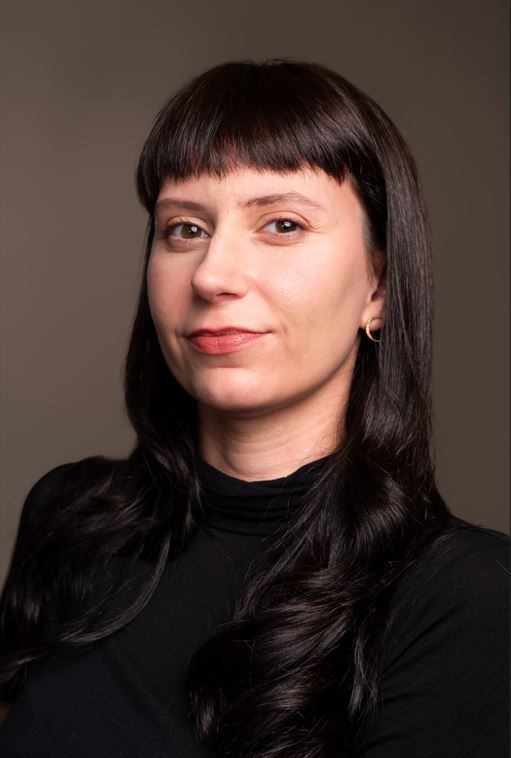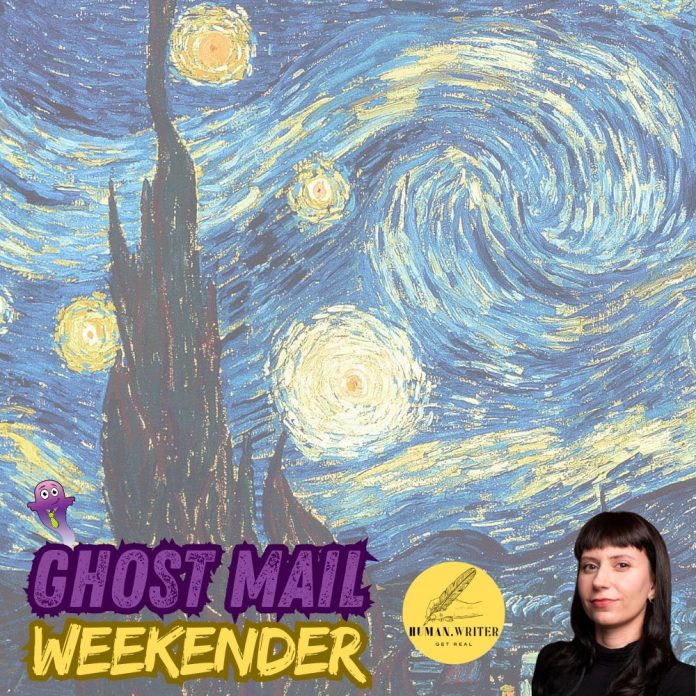You don’t need to be an art buff to recognise Starry Night, or to know that Vincent van Gogh once famously chopped off part of his ear. More than a century later, van Gogh is a global household name, with his signature style instantly recognisable even to those who’ve never set foot in a gallery. And we have one woman to thank for that.
These days, Vincent van Gogh’s paintings are reproduced on mugs, tote bags, umbrellas, notebooks and even the occasional pair of socks. You can buy LEGO sets of his Sunflowers and Starry Night. The Van Gogh Museum in Amsterdam, which contains over 700 of his paintings and drawings, typically welcomes 1.7 to 1.8 million visitors annually.
But the math doesn’t quite add up. By the time he died at 37, Vincent van Gogh had sold just one painting. He had no gallery backing, no heirs, and no real fame to speak of. By all logic, his work should have been scattered at auctions, gathering dust in attics, or worse, lost forever. So how did his paintings end up captivating the world?
The answer to that question lies in an unlikely champion who took it upon herself to preserve not only the art, but the life story of the man himself.
A girl called Jo
Johanna Gezina Bonger – Jo to friends – was born in Amsterdam in 1862, the fifth of seven children in a warm, musical household. Unlike her older sisters, who were kept busy with domestic duties, Jo’s cheerful nature and her position as her father’s favourite won her something unusual for a young Dutch woman of the era: the chance to pursue higher education. She studied English, earned the equivalent of a college degree, and even spent months in London working at the British Museum library.
By 17, she was keeping a diary, a habit that would one day become crucial to documenting the making of Vincent’s legacy. In her twenties, she taught English at girls’ schools in Elburg and Utrecht. Life was steady, respectable, and unremarkable.
And then her brother introduced her to a man named Theo van Gogh.
The family van Gogh
Theo, younger brother to Vincent, was an art dealer in Paris and a man very taken with Jo. After meeting her in Amsterdam, he returned the following year to declare his love. Jo was initially unimpressed, but she eventually changed her mind. The two married in April 1889 and moved to Paris, where Jo found herself not just married to Theo, but also, in a sense, to Vincent.
The brothers were deeply entwined – emotionally, financially, and artistically. While Vincent’s mercurial personality had estranged him from the majority of his family, Theo remained his staunchest supporter, encouraging his art, providing funds, and enduring Vincent’s bouts of mental illness. Across a lifetime, they exchanged a near-daily correspondence, much of which has been preserved. Of the 844 surviving letters Vincent wrote, 663 went to Theo, and another nine were addressed jointly to Theo and his wife, Jo. By contrast, only 39 of Theo’s letters to Vincent survive, leaving us with a story told largely in Vincent’s own words.
The very first was written when Vincent was just 19, beginning simply, “My dear Theo”. At that point, Vincent’s letters were practical, almost businesslike. But as he moved through London, Paris, and the many restless stops of his life, his writing deepened. His words began to carry not just facts but feelings, describing his doubts, bursts of optimism, frustrations with the art world, and musings on life’s meaning. For Vincent, Theo was not only a financial lifeline but the person to whom he could bare his soul.
In January 1890, Jo gave birth to a son. The couple named their firstborn Vincent Willem and asked the artist to be his godfather. Vincent was elated, and soon after the baby was born, he travelled to Paris to meet his tiny namesake. The visit stirred something tender in him. In a letter to Theo, he shared, “I started right away to make a picture for him, to hang in the bedroom – branches of white almond blossom against a blue sky.”
Two deaths in six months
But happiness was fleeting. Six months after the birth of his nephew, Vincent died in France from a self-inflicted gunshot wound. A grieving Theo organised an exhibition of his brother’s paintings in his Paris apartment, but his own health was failing. He had long suffered from syphilis, and the grief of Vincent’s death seemed to accelerate his decline.
Jo tried desperately to have him treated, even bringing a Dutch physician, Frederik van Eeden, to Paris. Despite her efforts, Theo died in January 1891, roughly six months after his brother. His death made Jo a 28-year-old widow with a one-year-old son, a small apartment, and roughly 200 canvases by her late brother-in-law, which at the time were considered valueless.
The paintings no-one wanted
Advisers told her to leave the paintings in Paris, where the art world lived and where the likelihood of a sale was higher. Instead, Jo returned to the Netherlands with all of it: the canvases, sketches, and hundreds of letters from Vincent to Theo.
Though not trained in art, she’d absorbed the Parisian atmosphere of the Impressionists and Post-Impressionists. Her instinct told her that the paintings and the letters were inseparable. The letters revealed Vincent’s inner world, his philosophy, and his fierce commitment to his art. If the public could read his words, they might understand his work.
Jo’s first attempt at organising an exhibition in 1892 didn’t go smoothly. Artist Richard Roland Holst wrote scathingly:
“Mrs van Gogh is a charming little woman, but it irritates me when someone gushes fanatically on a subject she knows nothing about… She forgets that her sorrow is turning Vincent into a god.”
The condescension was typical of the art establishment’s attitude towards her: she was a grieving widow dabbling in a world she didn’t understand. But Jo kept going, driven by her determination to honour her late husband’s passion.
Building the legend
Jo’s strategy for securing Vincent’s place in art history was slow, meticulous, and calculated. She kept the paintings that she considered the strongest in her possession, loaned carefully chosen works to influential exhibitions, and steadily built relationships with critics and dealers who could champion his art.
A pivotal move came in 1914, when she edited and published the brothers’ correspondence in Dutch. The letters, written over nearly two decades, revealed Vincent in his own words: passionate, unflinchingly honest, at times poetic, and often deeply vulnerable. They offered a raw portrait of the artist’s inner life, recasting him as the quintessential “suffering genius” and giving readers a personal connection to the man behind the canvases.
The publication was a cultural event in the Netherlands and quickly drew attention in Germany, where Jo’s partnership with prominent Berlin dealers Paul and Bruno Cassirer brought both the paintings and the letters to new audiences. Critics now had not just the visual evidence of Vincent’s genius but also his own voice to interpret it – a combination that proved irresistible.
That same year, Jo arranged for Theo’s remains to be moved to Auvers-sur-Oise, placing him where she knew he would have wanted to be – beside Vincent, beneath identical tombstones.
First Europe, then the world
Jo knew the next frontier was America. From 1915 to 1919, she lived in New York, translating Vincent’s letters into English and promoting his work. She mounted a Fifth Avenue exhibition and began cultivating the city’s collectors and critics. By the time she returned to Amsterdam after World War I, Vincent’s name was gaining recognition across Europe and the US.
In her later years, Jo battled Parkinson’s disease, but continued managing exhibitions, sales, and translations. When she died in 1925 at the age of 62, she was still working on the English edition of Vincent’s letters.
Her son, Vincent Willem, inherited around 400 of his namesake’s paintings, hundreds of drawings, and the brothers’ correspondence. He and later his own son continued Jo’s work, eventually leading to the founding of the Van Gogh Museum in Amsterdam.
History likes to frame genius as a solitary force. But sometimes, genius needs a partner. Someone who can see its worth, fight for it, and outlive it long enough to make the world notice.
Vincent van Gogh had Johanna Gezina Bonger. And thanks to her, we all know him as we do.
About the author: Dominique Olivier

Dominique Olivier is the founder of human.writer, where she uses her love of storytelling and ideation to help brands solve problems.
She is a weekly columnist in Ghost Mail and collaborates with The Finance Ghost on Ghost Mail Weekender, a Sunday publication designed to help you be more interesting. She now also writes a regular column for Daily Maverick.
Dominique can be reached on LinkedIn here.





Excellent article, as always, thanks Dominique.
Thanks so much Laurence, I’m glad you enjoyed it!
I really enjoyed this read, having visited the museum in 2024, one does appreciate the family and heritage of the story.
I’m officially jealous Maurice – I hope to visit is myself one day!
Loved reading this! Thanks Dominique!
You’re welcome Deborah!
Facinating story! Thanks, really enjoyed reading it.